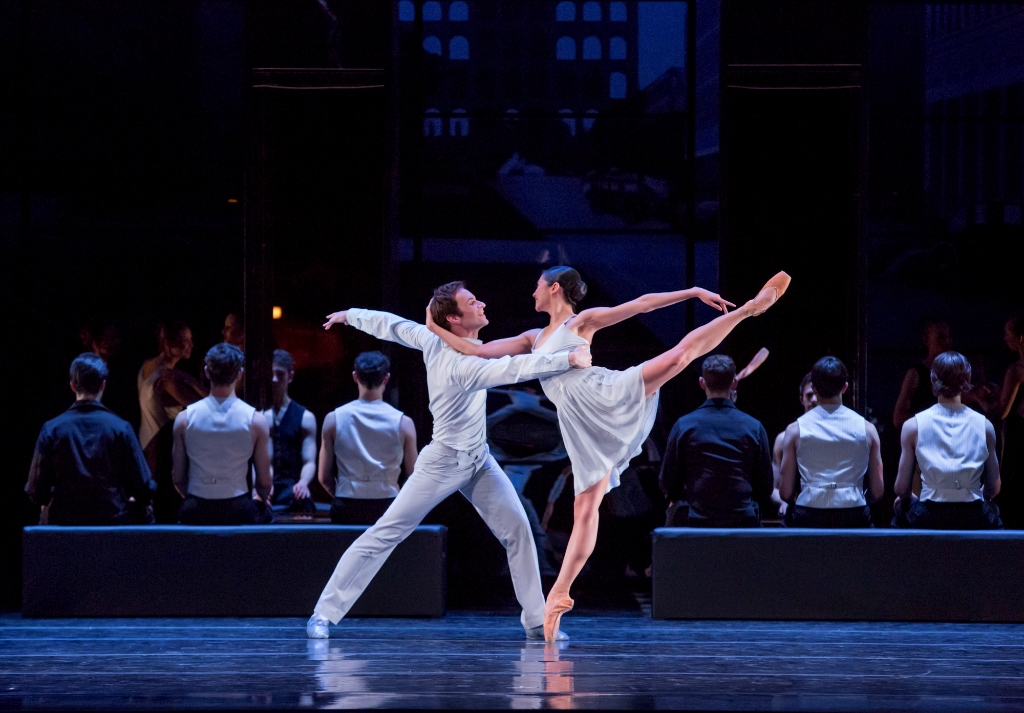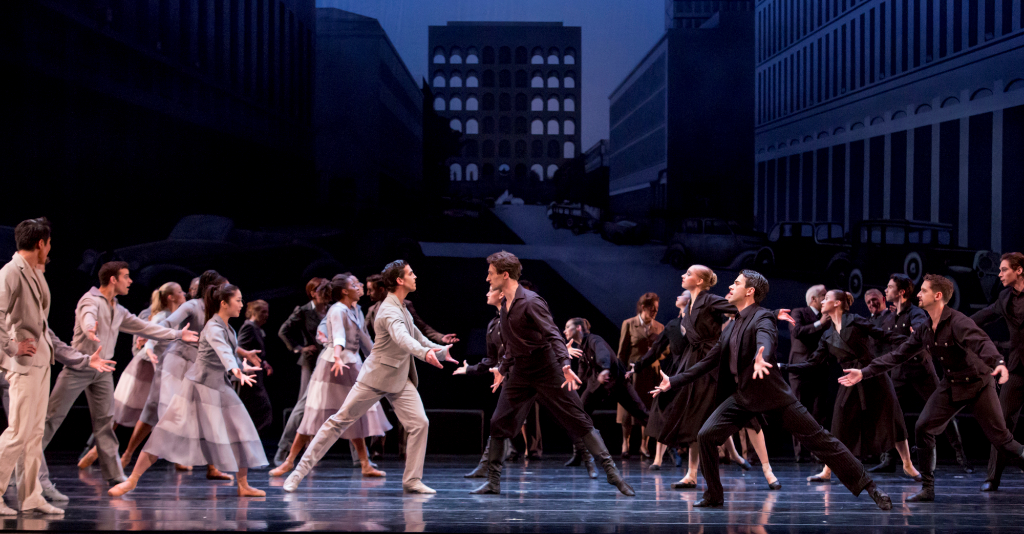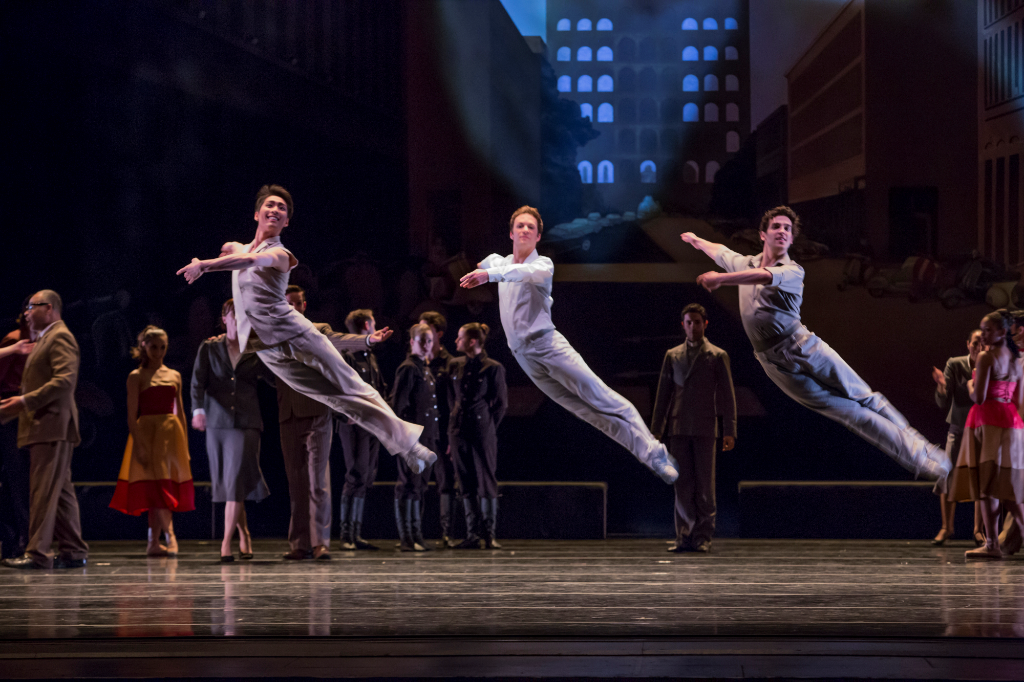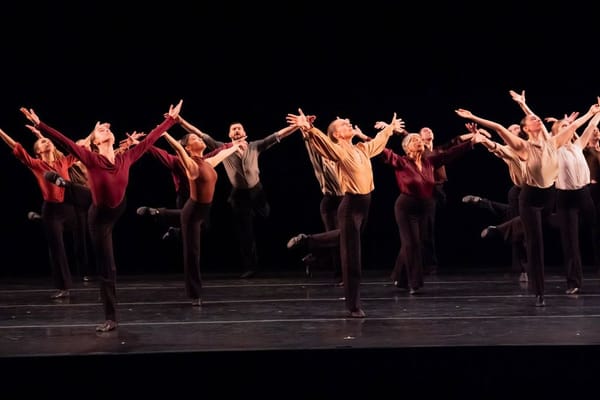Different Decades, Same Problems?

“Romeo & Juliet”
The Joffrey Ballet
David H. Koch Theater
New York, NY
March 29, 2017
The marquee event of The Joffrey Ballet’s brief return to New York City after being gone for 22 years was its modernized “Romeo & Juliet,” which was fresh and interesting, but also imperfect. The premise of this 2008 ballet by Polish choreographer Krzysztof Pastor, with dramaturgy by Willem Bruls, was that throughout the epochs and time, some things, like cultural divisions and struggles of forbidden love, stay the same. To show that, the work kept the classic story intact, but the cultural background to the tale, which shifted around through the decades of 20th Century Italy, raised enough questions to really detract from the otherwise compelling dancing.
That the work didn’t try to mess with a good thing and edit Shakespeare’s narrative was perhaps the best aspect of the production, but structurally that faithfulness hurt the overall effect. In this Pastor/Bruls ballet, Juliet met Romeo in 1930s Italy, during the Mussolini regime. They fell in love amid very obvious cultural tensions that divided that corps into light and dark attire, and their happiness and love grew toward a decision to get married in the 1950s, in the midst of Italian prosperity. Things then went awry, with Juliet forced to marry and led to resort to the dramatic poison solution in the Berlusconi 1990s, which, for a viewer who may have followed along up until this point, was bound to force a pause and a quizzical look.
While the 1930s and 1950s scenes, with décor mostly supplied by film projections of an Italian street onto the stage background, seemed strained yet somewhat believable, the tragedy in the 1990s just made no sense. After all, how could a ‘90s city girl in a very short dress, who no doubt, like so many females of the decade, was swept up in (or at least heard of) the Spice Girls and their Girl Power messaging, resort to precisely the dramatic measures she chose? Wouldn’t she instead go to school, get a job, get legally emancipated or just simply run away from home, and otherwise embrace her feminist independence and choices, instead of choosing a faked death as her radical out? Wouldn’t the modern European solution to Juliet’s problem be something, anything, not contained in a vial? Moreover, wouldn’t the family that allowed their daughter to wear slight outfits not be liberal enough in the first place to at the very least not force marriage so early and to so undesired a man as Paris (though, it should be noted that she was given options of other men, suggesting that to her parents any man but Romeo would do)?
It may be fair to ask the viewer to suspend disbelief somewhat in the name of art, but what this Pastor/Bruls take called for was a determined doing away with critical faculties.

The awkwardness of the 1990s setting couldn’t really be explained away as a structural inconvenience either, as the choreography itself from the outset was full of modernity in every step with dancers given many turned-in poses and isolated movements, all setting up the culminating decade as the logical conclusion of the ballet. Fortunately, these crisp steps, combined with well-appointed blocking of the story’s dances, are what carried the ballet forward, and together with really impressive acting and dancing from the leads, gave the audience enough to enjoy the production nonetheless.
The early scenes, set in the 1930s, presented the corps as different factions, and their dancing combined only to have all of the dancers fall to the ground as Juliet, danced by Christine Rocas, appeared on the stage, and slowly walked amidst the bodies resulting from the conflict across the stage. Throughout the whole ballet Rocas was incredibly engaging and full of life, yet possessed a lot of youthful innocence, and that quality shone through right away, in that very first scene of hers. Later, during the ball section she’d smile at the crowd around her broadly, curiously look around, and project each shade of the music’s emotions in a way that was impossible to miss. Rory Hohenstein as Romeo was at a bit of a disadvantage next to her, not possessing quite the same acting ability, but the couple overall complemented each other. Above all, the dancers just looked good, with Rocas showing beautiful lines each time the choreography allowed for it, and Hohenstein next to Rocas’s smaller physique looked tall and dignified, almost princely.

The choreography itself did not always make sense, and in some sections, particularly in the famous Pillow Dance that Pastor started as a trio, looked odd, but the performers highlighted the positive. For the leads, the balcony pas de deux was by far the most winning section to show their dancing. The duet started with Juliet suspended in a glass elevator (odd, considering the story at that point was still set in 1930s), and was full of many grand jetes and leg lifts that the dancers took advantage of to show physical skills, and suspended romantic moments that showcased their acting abilities. It ended beautiful with the couple in the middle of the stage that was filling with a crowd, oblivious to those other bodies and locked in their own world.
Similarly, in the bedroom pas de deux that took place almost entirely on a modern looking bed, the dancers made the most of their close proximity to play up their characters’ emotional side. Supporting cast, too, delivered a great performance, with Yoshihisa Arai’s Mercutio almost completely overtaking many scenes with his grand jumps and even more powerful artistic engagement. All in all, setting the story aside, the dancers were worth watching.
copyright © 2017 by Marianne Adams



